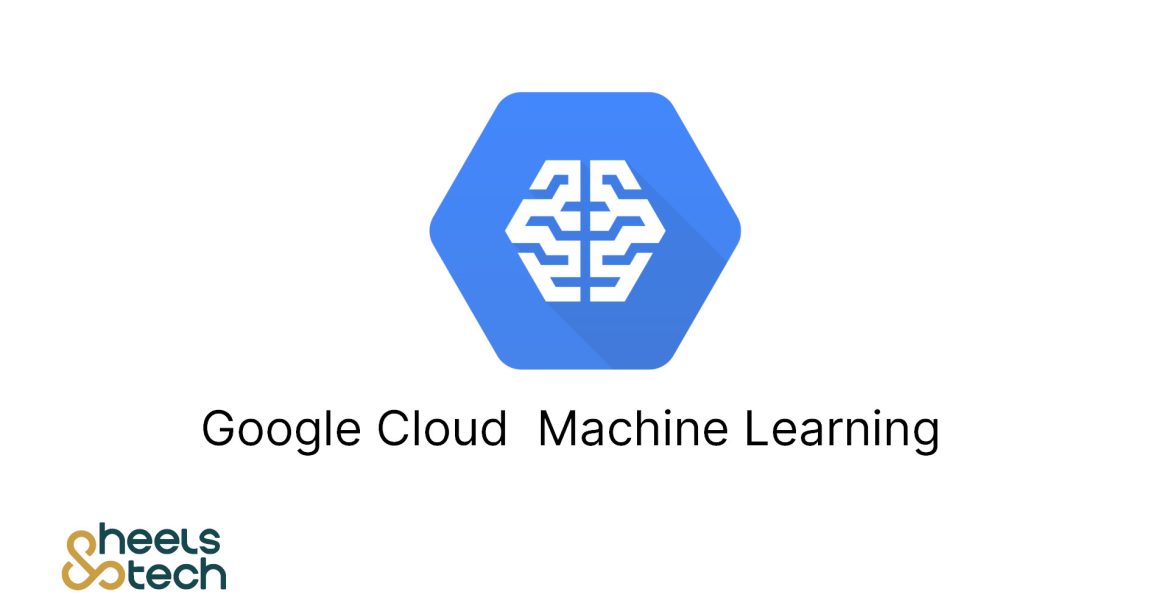Building and Deploying Machine Learning Models with Google Cloud AI Platform: Your Guide to the Future of AI
October 30, 2023 2024-11-25 16:29Building and Deploying Machine Learning Models with Google Cloud AI Platform: Your Guide to the Future of AI

Building and Deploying Machine Learning Models with Google Cloud AI Platform: Your Guide to the Future of AI
Building and deploying machine learning models can be an exciting and valuable endeavor, and Google Cloud AI Platform offers a fantastic suite of tools and services to assist you in this process.
To begin, it’s crucial to understand the concept of machine learning. Machine learning is a branch of artificial intelligence that enables computers to learn from data and make predictions or decisions without being programmed. Imagine you have a dataset containing information about houses, their size, number of rooms, location, and selling prices. By using machine learning, you can train a model that learns the patterns and relationships within the data and predict the price of a house based on its features.
Google Cloud AI Platform:
Google Cloud AI Platform is a powerful cloud-based platform for building, training, and deploying machine learning models. It offers a wide range of tools and services, including pre-built machine learning models, custom model training, hyperparameter tuning, and model deployment. By leveraging the capabilities of AI Platform, you can accelerate your machine learning development and deployment, reduce costs, and scale your models effortlessly.
Now let’s dive into the machine learning model-building process with Google Cloud AI Platform. Here are some guidelines to follow;
1. Data Preparation:
The first step in building a machine learning model is to prepare your data. This involves cleaning, transforming, and normalizing your data to ensure that it’s in the right format for machine learning. You can use GCP’s data processing tools, such as Dataflow and Dataproc, to prepare your data efficiently. These tools enable you to scale your data processing easily, allowing you to handle large datasets without worrying about infrastructure management. In our housing example earlier, this would involve collecting data on house size, rooms, locations, and prices, ensuring the data is accurate and consistent.
2. Choosing a Model:
Once your data is ready, it’s time to build your machine learning model. Google Cloud AI Platform offers several options for building your model, depending on your specific needs:
- a. AutoML: If you’re new to machine learning or don’t have the expertise to build a model from scratch, AutoML is an excellent option. It’s like having a personal machine learning assistant. AutoML enables you to build custom machine learning models without any coding, by simply providing your data and selecting the type of model you want to build.
- b. TensorFlow: If you’re comfortable with coding and have experience with machine learning, TensorFlow is a great option. It’s like having a powerful machine learning toolkit at your fingertips. TensorFlow is an open-source machine learning framework that enables you to build custom models using Python or other programming languages.
3. Training Your Model:
Once you’ve built your model, it’s time to train it. Machine learning training involves feeding your model with data and adjusting the model’s parameters to improve its accuracy. Google Cloud AI Platform provides several options for model training:
- a. AutoML: AutoML handles the training process for you, by automatically selecting the best parameters and algorithms for your model. You can monitor and adjust the training process, but the heavy lifting is done by AutoML.
- b. Custom Training: If you prefer more control over the training process, custom training is the way to go. You can use GCP’s powerful infrastructure to train your models efficiently and at scale. You can take advantage of features like hyperparameter tuning, distributed training, and GPU acceleration to speed up the training process and improve accuracy.
4. Model Evaluation:
Once the training is complete, you need to evaluate your model’s performance to ensure it is accurate and reliable. Google Cloud AI Platform offers tools to analyze metrics like accuracy, precision, and recall. These metrics help you understand how well your model is performing and whether it needs further refinement.
5. Model Deployment:
After validation, it’s time to deploy your trained machine learning model so that it can make predictions on new data. Google Cloud AI Platform simplifies this process by providing deployment options like online predictions or batch predictions. Online predictions allow real-time interaction with the model, while batch predictions process large amounts of data asynchronously. Some options for model deployment:
- a. AutoML: With AutoML, model deployment is handled automatically for you. You can deploy your model with a single click, and AutoML takes care of the rest.
- b. Custom Deployment: If you need more control over the deployment process, custom deployment is the way to go. You can deploy your model using GCP’s AI Platform Prediction service, which enables you to serve your model’s predictions via an API. You can also deploy your model to Kubernetes, enabling you to manage and scale your model’s instances efficiently.
6. Monitoring and Optimization:
Once your model is deployed, it’s important to monitor its performance and optimize it for better accuracy and efficiency. Google Cloud AI Platform provides several tools for monitoring and optimization, such as Stackdriver Monitoring and TensorBoard. These tools enable you to track your model’s performance, identify potential issues, and make adjustments to improve its accuracy and efficiency.
Let’s consider an example to paint a clearer picture. Imagine you work for a retail company and want to predict customer churn, i.e., identify customers who are likely to discontinue their services. Using historical customer data, you can build a machine learning model to predict churn probability. With Google Cloud AI Platform, you can upload the customer data, choose a classification model like logistic regression, train the model on the dataset, evaluate its performance, and finally deploy it to predict customer churn in real-time or for large batches of new customer data.
It’s important to note that building and deploying machine learning models is an ongoing process. You may need to refine your model, adjust hyperparameters, or include additional features based on your requirements and feedback from model evaluation. Google Cloud AI Platform simplifies this process by providing tools for experimentation, model versioning, and continuous evaluation.
Google Cloud AI Platform offers a powerful and user-friendly environment for building and deploying machine learning models. By following the steps outlined in this guide, you can gather your data, choose an appropriate model, train and evaluate it, and deploy it for real-time or batch predictions. Whether you’re a beginner or an experienced data scientist, Google Cloud AI Platform provides the resources to build intelligent applications and unlock the potential of your data. So, what are you waiting for? Don’t hesitate to explore this fascinating field and start building your own machine learning models with Google Cloud AI Platform!



